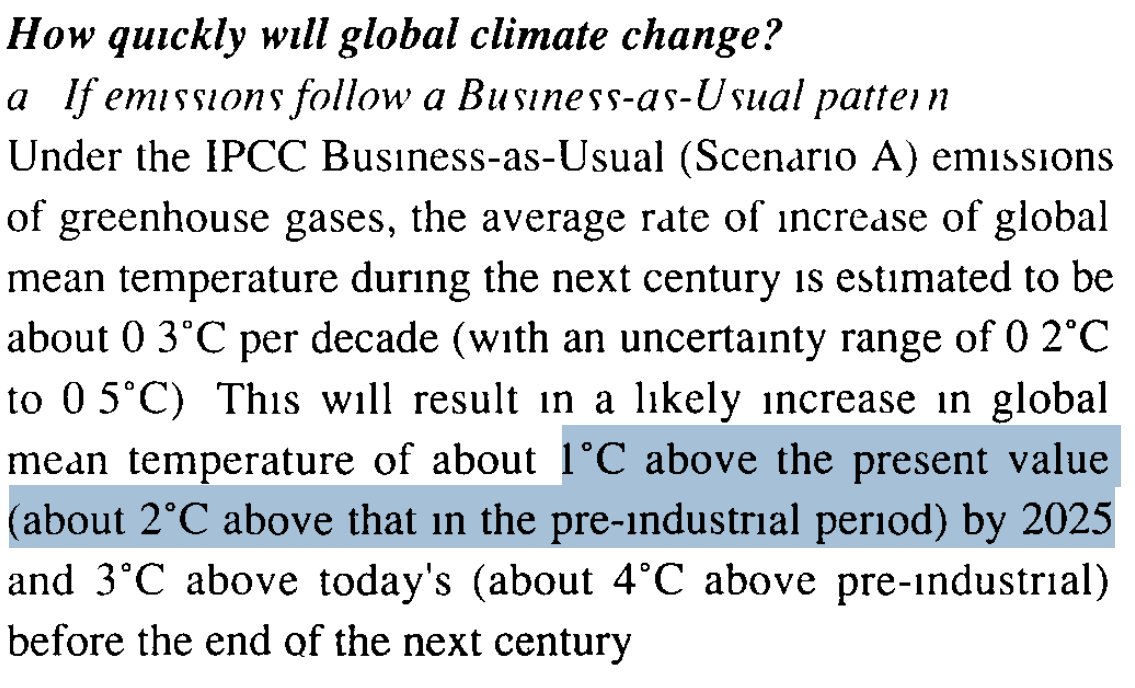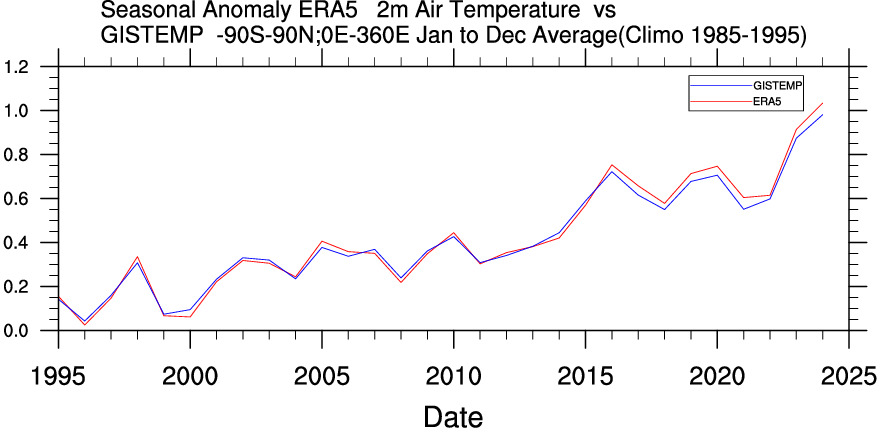1/P
Interesting paper below co-authored by John Ioannidis, published in a journal Ioannidis was editor-in-chief of for a decade.
It makes some interesting points, but also illustrates the dangers of under-estimating COVID-19.
ncbi.nlm.nih.gov/pmc/articles/P…
Interesting paper below co-authored by John Ioannidis, published in a journal Ioannidis was editor-in-chief of for a decade.
It makes some interesting points, but also illustrates the dangers of under-estimating COVID-19.
https://twitter.com/AtomsksSanakan/status/1376472127562481664
ncbi.nlm.nih.gov/pmc/articles/P…

2/P
Let's start with 2 concepts:
- infection fatality rate (IFR)
- herd immunity
The 'herd immunity threshold' is the proportion of people who need to be immune to infection in order for the pandemic to not accelerate, even if we lived life like usual.
Let's start with 2 concepts:
- infection fatality rate (IFR)
- herd immunity
The 'herd immunity threshold' is the proportion of people who need to be immune to infection in order for the pandemic to not accelerate, even if we lived life like usual.
https://twitter.com/AtomsksSanakan/status/1341783142114484226
3/P
Proteins known as antibodies (+ the immune cells that make them, such as B cells / plasma cells) are crucial for preventing re-infection, + thus to getting herd immunity.
Seroprevalence studies measure how many people have increased antibodies levels

Proteins known as antibodies (+ the immune cells that make them, such as B cells / plasma cells) are crucial for preventing re-infection, + thus to getting herd immunity.
Seroprevalence studies measure how many people have increased antibodies levels
https://twitter.com/AtomsksSanakan/status/1387329759697309696
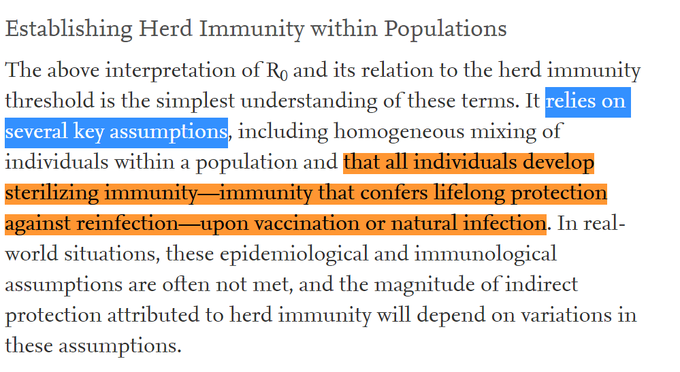
4/P
Seroprevalence studies can also be used for estimating the number of infected people, since antibody levels increase after infection.
That can then be used to estimate IFR, which is the proportion of SARS-CoV-2-infected people who die of COVID-19.
institutefordiseasemodeling.github.io/nCoV-public/an…
Seroprevalence studies can also be used for estimating the number of infected people, since antibody levels increase after infection.
That can then be used to estimate IFR, which is the proportion of SARS-CoV-2-infected people who die of COVID-19.
institutefordiseasemodeling.github.io/nCoV-public/an…

5/P
So over-estimating the proportion of people with increased antibody levels (i.e. seroprevalence) is dangerous for at least 2 reasons:
1) under-estimating IFR by over-estimating the number of infected people
2) over-estimating how close society is to herd immunity
So over-estimating the proportion of people with increased antibody levels (i.e. seroprevalence) is dangerous for at least 2 reasons:
1) under-estimating IFR by over-estimating the number of infected people
2) over-estimating how close society is to herd immunity
6/P
Early in the pandemic, Ioannidis under-estimated the risk of IFR by giving unrealistic under-estimates of both IFR and the number people SARS-CoV-2 would infect.
See @JHowardBrainMD for more emphasis on this.
statnews.com/2020/03/17/a-f…
Early in the pandemic, Ioannidis under-estimated the risk of IFR by giving unrealistic under-estimates of both IFR and the number people SARS-CoV-2 would infect.
See @JHowardBrainMD for more emphasis on this.
https://twitter.com/JHowardBrainMD/status/1375991211232796673
statnews.com/2020/03/17/a-f…

7/P
He also gave a scenario he did not espouse, with an IFR of ~1% and a higher herd immunity threshold that allowed for ~60% of people to be infected.
He later moved on to over-estimating infection rates to under-estimate IFR.
statnews.com/2020/03/17/a-f…
He also gave a scenario he did not espouse, with an IFR of ~1% and a higher herd immunity threshold that allowed for ~60% of people to be infected.
He later moved on to over-estimating infection rates to under-estimate IFR.
https://twitter.com/AtomsksSanakan/status/1341286778884550656
statnews.com/2020/03/17/a-f…

8/P
And Ioannidis peddled the debunked idea that the herd immunity threshold (HIT) was low.
So his trifecta is:
1) under-estimate IFR,
2) over-estimate how close herd immunity is by over-estimating infection rates and, 3) under-estimating HIT

And Ioannidis peddled the debunked idea that the herd immunity threshold (HIT) was low.
So his trifecta is:
1) under-estimate IFR,
2) over-estimate how close herd immunity is by over-estimating infection rates and, 3) under-estimating HIT
https://twitter.com/AtomsksSanakan/status/1314397925016064000

9/P
That brings us to his newer paper. He + his co-authors show previously infected people are at lower risk of infection than people who were not previously infected.
Makes sense, since antibodies increasing after infection + help prevent re-infection.
ncbi.nlm.nih.gov/pmc/articles/P…
That brings us to his newer paper. He + his co-authors show previously infected people are at lower risk of infection than people who were not previously infected.
Makes sense, since antibodies increasing after infection + help prevent re-infection.
ncbi.nlm.nih.gov/pmc/articles/P…

10/P
I'm skeptical of the claim that immune protection following infection is as good as immune protection following vaccination.
But that's not the main focus of this thread. So folks can go elsewhere for discussion of that:
I'm skeptical of the claim that immune protection following infection is as good as immune protection following vaccination.
But that's not the main focus of this thread. So folks can go elsewhere for discussion of that:
https://twitter.com/AtomsksSanakan/status/1396529804078354442
11/P
Their paper over-estimates seroprevalence in India, similar to Ioannidis' fellow Stanford COVID-19 contrarian Jay Bhattacharya.
60% seroprevalence would also be incompatible with Ioannidis' previous speculation on low HIT.
ncbi.nlm.nih.gov/pmc/articles/P…
Their paper over-estimates seroprevalence in India, similar to Ioannidis' fellow Stanford COVID-19 contrarian Jay Bhattacharya.
60% seroprevalence would also be incompatible with Ioannidis' previous speculation on low HIT.
https://twitter.com/AtomsksSanakan/status/1387322857005494275
ncbi.nlm.nih.gov/pmc/articles/P…

12/P
Since at least May 2020, I + others warned of the risk of saying HIT is low:
archive.is/Xjyec#selectio…
But contrarians like claiming HIT is low to say policies they dislike are not needed.
Here's how that turned out for India:
ourworldindata.org/explorers/coro…
Since at least May 2020, I + others warned of the risk of saying HIT is low:
archive.is/Xjyec#selectio…
https://twitter.com/AtomsksSanakan/status/1387315729096220676
But contrarians like claiming HIT is low to say policies they dislike are not needed.
Here's how that turned out for India:
ourworldindata.org/explorers/coro…

13/P
But that's India. How about Austria, the country's Ioannidis paper was about?
Here's a perspective to contrast with Ioannidis:
IFR is high, HIT is low, + infection rates in 2020 were low. So letting SARS-CoV-2 infect more people is dangerous.

But that's India. How about Austria, the country's Ioannidis paper was about?
Here's a perspective to contrast with Ioannidis:
IFR is high, HIT is low, + infection rates in 2020 were low. So letting SARS-CoV-2 infect more people is dangerous.
https://twitter.com/AtomsksSanakan/status/1353847777290317824
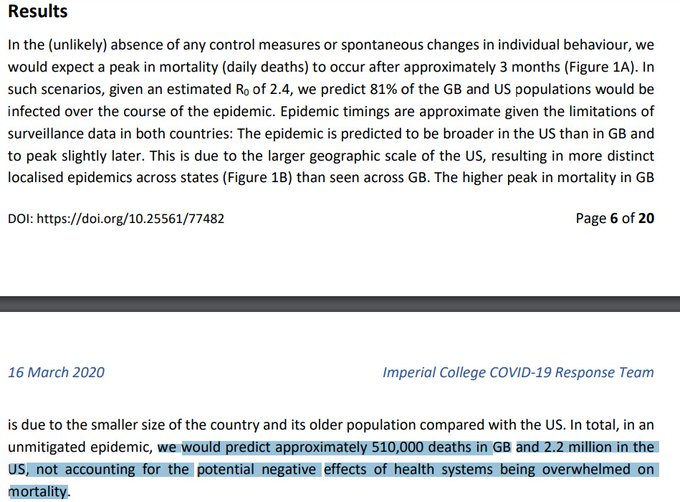
14/P
Ioannidis instead gives IFR estimates of ~0.3% - ~0.4%, with his early speculation of HIT being low and a substantial number of people infected.
onlinelibrary.wiley.com/doi/10.1111/ec…
Ioannidis instead gives IFR estimates of ~0.3% - ~0.4%, with his early speculation of HIT being low and a substantial number of people infected.
https://twitter.com/AtomsksSanakan/status/1381071853448527872
https://twitter.com/AtomsksSanakan/status/1402014752692449281
https://twitter.com/AtomsksSanakan/status/1380409152632160256
onlinelibrary.wiley.com/doi/10.1111/ec…
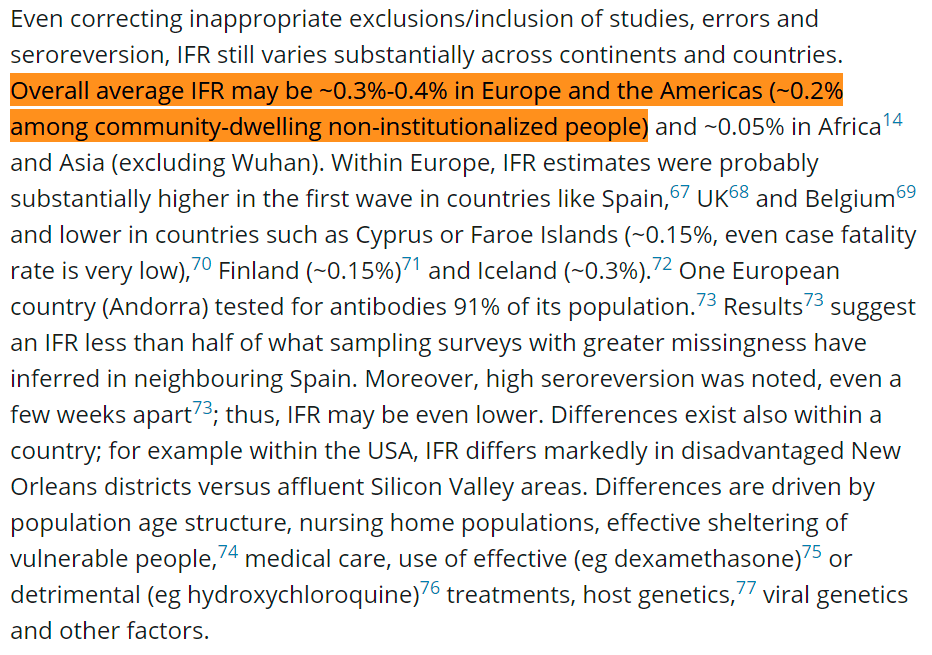
15/P
Results from the ski resort to town of Ischgl, Austria seems to support his claim, with ~42% of people infected with a low IFR.
But that IFR estimate is non-robust, as the article notes, especially in combination with the low population.
medrxiv.org/content/10.110…
Results from the ski resort to town of Ischgl, Austria seems to support his claim, with ~42% of people infected with a low IFR.
But that IFR estimate is non-robust, as the article notes, especially in combination with the low population.
medrxiv.org/content/10.110…

16/P
Results in Vienna are more robust.
Calculating IFR as Ioannidis does (deaths 1 week after the study's mid-point), gives an IFR of ~0.8%, with ~1% infected.
Not what Ioannidis predicted.
ncbi.nlm.nih.gov/pmc/articles/P…
covid19-dashboard.ages.at/dashboard_Tod.…
nature.com/articles/s4159…
Results in Vienna are more robust.
Calculating IFR as Ioannidis does (deaths 1 week after the study's mid-point), gives an IFR of ~0.8%, with ~1% infected.
Not what Ioannidis predicted.
ncbi.nlm.nih.gov/pmc/articles/P…
covid19-dashboard.ages.at/dashboard_Tod.…
nature.com/articles/s4159…
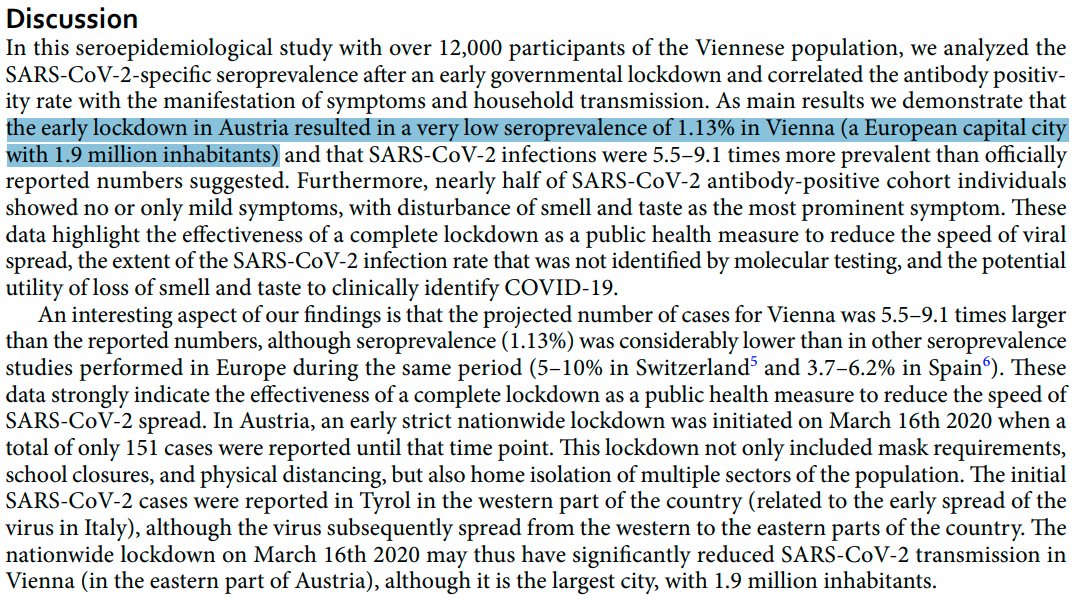
17/P
Similar pattern in Austria overall months later, with an IFR of ~0.5% and ~5% seroprevalence.
(with Ioannidis' method under-estimating IFR by not including a long enough lag)
covid19.who.int/region/euro/co…
statistik.at/web_de/presse/…
Similar pattern in Austria overall months later, with an IFR of ~0.5% and ~5% seroprevalence.
(with Ioannidis' method under-estimating IFR by not including a long enough lag)
https://twitter.com/AtomsksSanakan/status/1395635830945951747
covid19.who.int/region/euro/co…
statistik.at/web_de/presse/…

18/P
And as with India, it was ridiculous to suggest Austria achieved herd immunity by February 2021.
Austria's cases/day and COVID-19 deaths/day increased, which would not happen with herd immunity.
covid19.who.int/region/euro/co…
And as with India, it was ridiculous to suggest Austria achieved herd immunity by February 2021.
Austria's cases/day and COVID-19 deaths/day increased, which would not happen with herd immunity.
https://twitter.com/CT_Bergstrom/status/1294443485710360576
covid19.who.int/region/euro/co…

19/P
So Austria + India illustrate the danger of under-estimating COVID-19 in the way John Ioannidis, Jay Bhattacharya, + their ilk did.
I don't expect most of their fans to learn from this, though. Ideology trumps facts for them

So Austria + India illustrate the danger of under-estimating COVID-19 in the way John Ioannidis, Jay Bhattacharya, + their ilk did.
I don't expect most of their fans to learn from this, though. Ideology trumps facts for them
https://twitter.com/dgurdasani1/status/1386275256189558787
https://twitter.com/swapneilparikh/status/1372986824486838277

20/P
So Ioannidis just went to Austria to talk about IFR, without admitting he was wrong.
Oh well. Maybe he'll find more people who don't know his long history of being wrong on COVID-19. 🤷♂️
20:16 - 25:20:
So Ioannidis just went to Austria to talk about IFR, without admitting he was wrong.
Oh well. Maybe he'll find more people who don't know his long history of being wrong on COVID-19. 🤷♂️
20:16 - 25:20:
• • •
Missing some Tweet in this thread? You can try to
force a refresh


